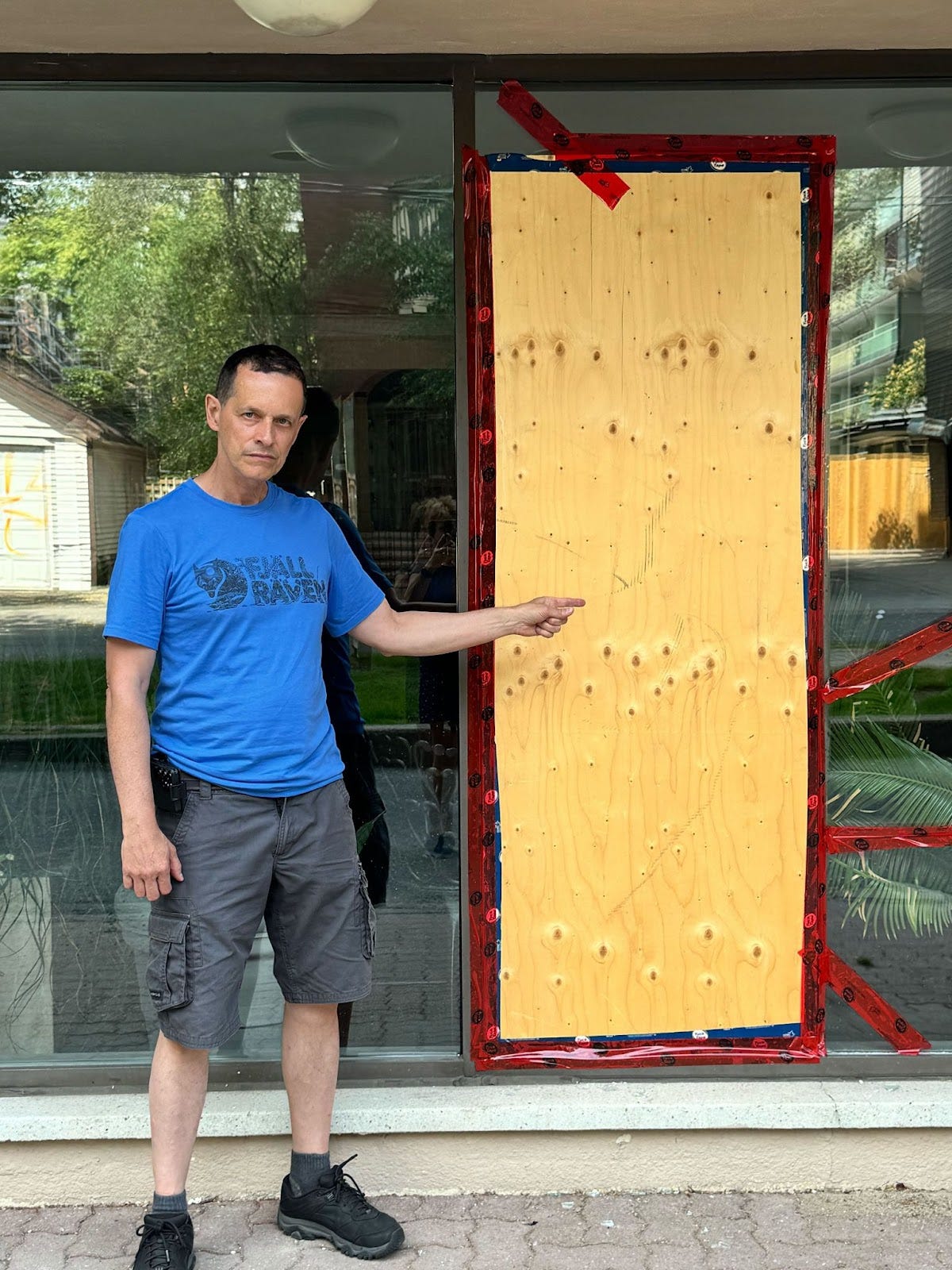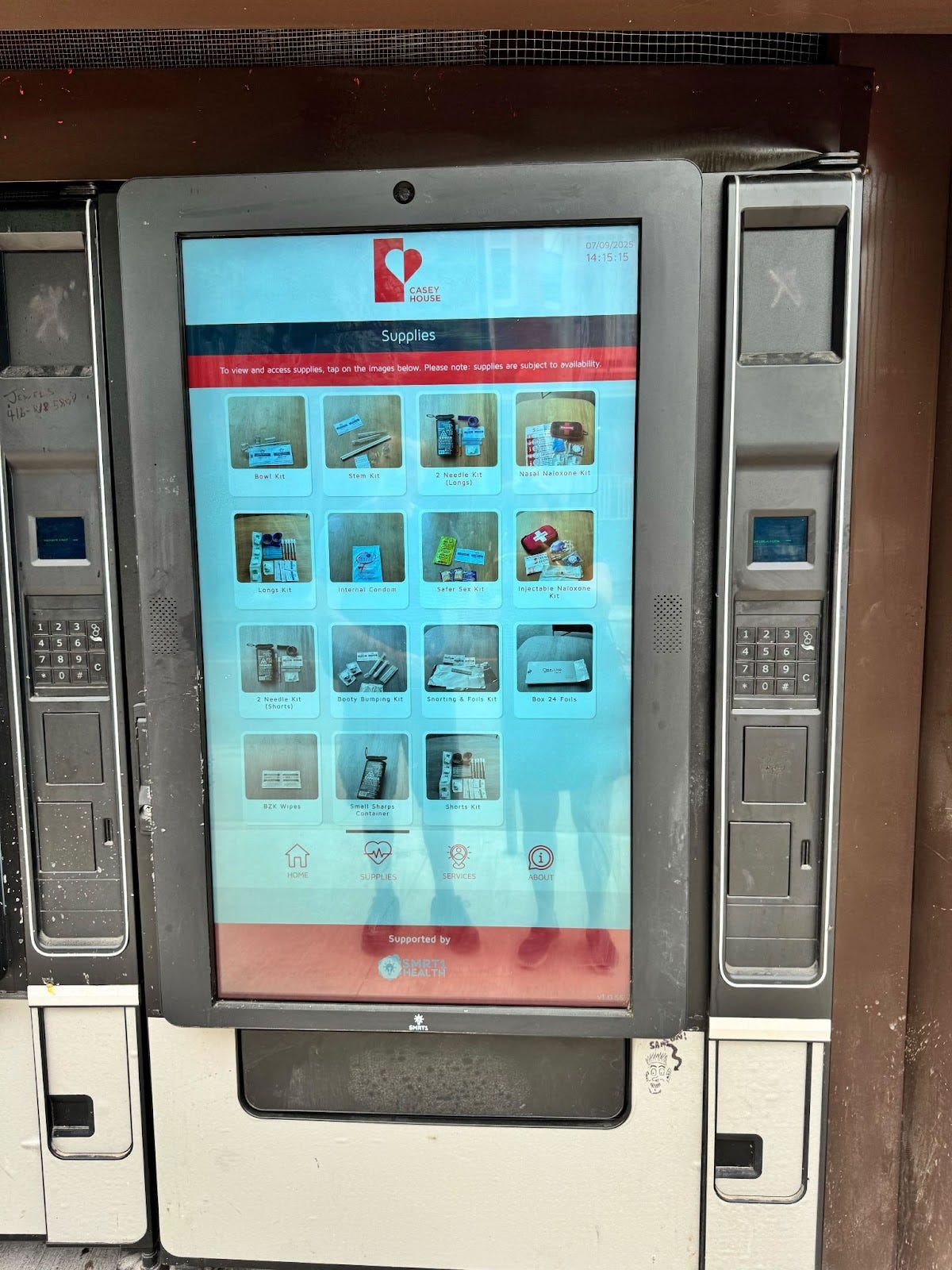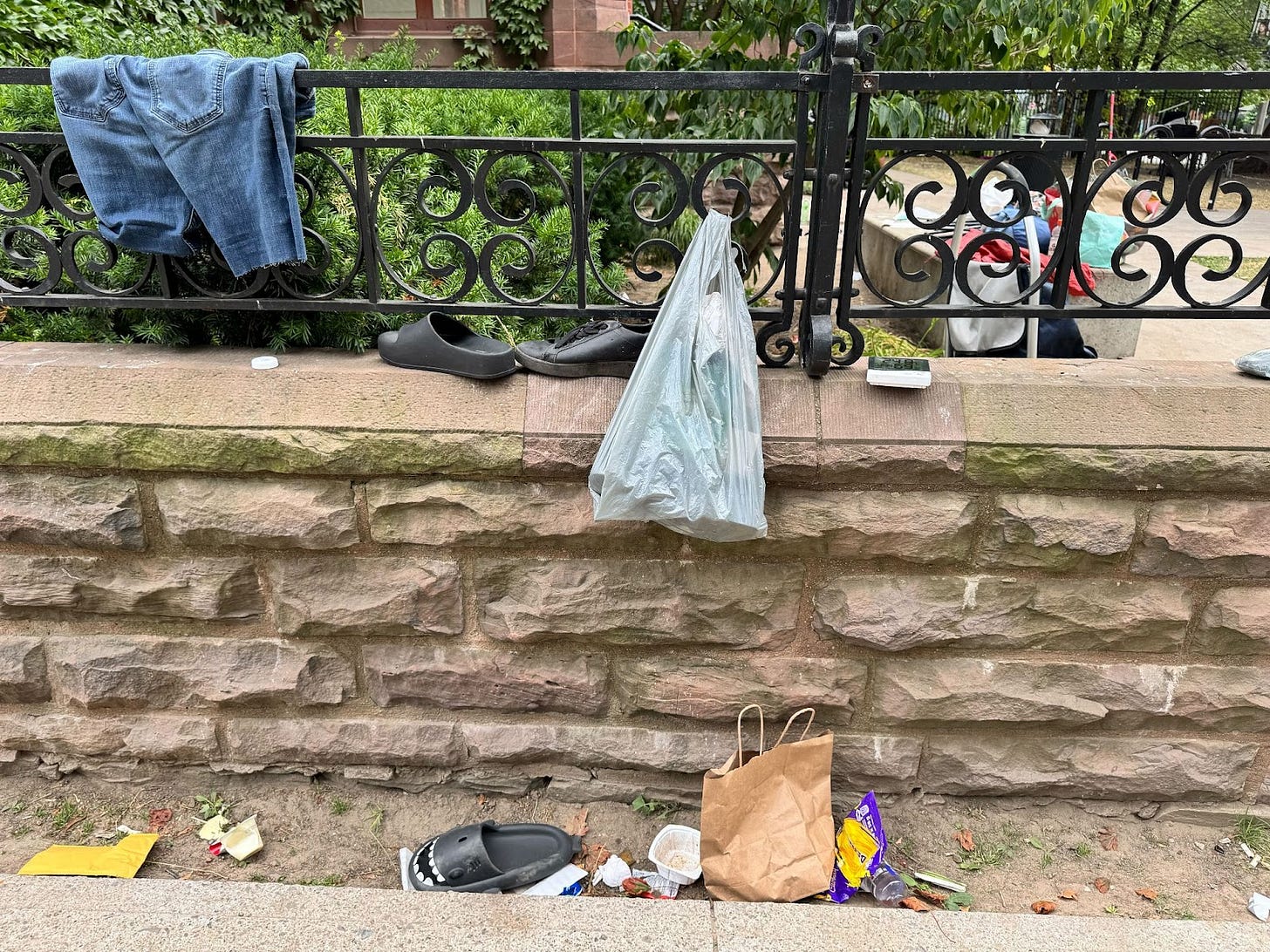EXCLUSIVE: Vending machine dispenses needles, “booty bumping” kits metres from school
Sue-Ann Levy writes, "The addicts have set up tents in the back of their downtown Toronto building. They also lie on the sidewalks around the neighbourhood, harass residents and have broken windows."
Author: Sue-Ann Levy
Andre Fortier has lived in a spacious Huntley St. apartment for 26 years.
It used to be the “best kept secret,” he says, until the drug dealers and addicts recently started terrorizing the Jarvis and Bloor neighbourhood.
Now he wants to move.
The addicts have set up tents in the back of their downtown Toronto building. They also loiter and lie on the sidewalks around the neighbourhood, harass residents and have broken windows in their building.
The drug dealers hang out across the street at Fife House.
Another long-time resident of 15 years, Denise Barrowman, says the screaming after 11 p.m. is intolerable and she has had to alter her route to the grocery store and elsewhere to try to avoid the chaos.
”I don’t feel safe,” she said. “You can’t go for a walk anymore…you never know what state of mind they’re in…it’s so unpredictable.”
The reason?
When the provincial government shuttered five safe injection sites at the end of March, the drug addicts and the dealers flocked to Casey House, where two vending machines — called SASSY (Safely Access Services and Supplies for You) — provide all kinds of drug use and sex supplies 24/7 for free.
They were installed last summer but became a hotbed of activity since the five sites were shut at the end of March.
The machines offer such supplies as a stem kit, needle kit, internal condoms, booty bumping kit, a shorts kit and various other provisions to make illegal drug taking clean and sex safe.
To make matters worse the machines advise that supervised consumption (injection) services are available from 10 a.m. to 8 p.m. inside the facility to all people living with or at risk of HIV (the latter striking me as a pretty sweeping category).
Last call to shoot up safely is 7 p.m.
After being offered drugs on the street, seeing their building vandalized and being told by a friend they will no longer visit because of the situation, Fortier decided he needed to fight back.
In the past month alone he says he’s documented more than 100 incidents of screaming and psychotic episodes, fights between drug dealers, loud music and late-night disturbances and individuals unconscious on the sidewalk with syringes beside them.
Barrowman says she’s embarrassed to have people come to her building.
I visited the area and the vending machines this past week and noted drug addicts unconscious on the sidewalk, people shooting up and throwing their trash on the front yard of Casey House and drug dealers loitering across the street.
Fortier has written to his councillor Chris Moise, Mayor Olivia Chow, Toronto public health, the Ombudsman’s office, Premier Doug Ford, the police and of course Casey House about his increasing concerns with the declining safety of the area.
He has also made it clear that the dispensing machines are located within 200 metres of Monsignor Fraser College Catholic school, contrary to Ontario regulation 14/24.
Moise’s senior advisor wrote back insisting that the behaviours he’s witnessing are not because of the work of Casey House but a result of “more than a decade of underinvestment in tackling a housing crisis, a mental health crisis, and an addictions crisis.”
He went on to say that Moise — one of the council’s most useless councillors in my view — believes that harm reduction is an “essential and lifesaving health service.”
Silva then passed the buck to the police.
Talk about being tone deaf.
Chow’s office did not respond.
Lisa McDonald, the director of communications and public policy for Casey House, told Fortier that Casey House “firmly believes that providing a safe space to consume illicit substances helps prevent overdose related deaths.”
She said that they do notice increased garbage and have “increased the number of regular sweeps” to pick up discarded needles and drug paraphernalia on their property.
She made it clear that they do not provide “generalized waste” collection outside of their property.
Passing the buck, she encouraged Fortier to call Moise’s office or 311.
In other words, clean it up yourself!
Fortier responded that “no action is unacceptable” and she has offered no solution for the “unsafe conditions and degradation of public space” emanating from the vending machines and the kinds of clientele they’re encouraging.
Fortier and Barrowman have been given the feeling they’re on their own, dealing with the fallout—that not even the police will help.
They noted, quite rightly, that Casey House shouldn’t be just supervising injections and then throwing the drug addicts right back on the street. It should involve “really supervising them,” says Barrowman.
It’s not as if Casey House has a shortage of cash or staff to deal with the problems they’ve created.
According to their own audited statements for their March year-end, they received $11.8-million in provincial grants and $2.1-million from their foundation.
Perhaps they’ve blown the bundle on salaries and staff.
The federal charities website notes that the registered charity had 70 full-time and 62 part-time employees in 2024.
Ontario data shows 23 employees on the Sunshine list in 2,024, with CEO Joanne Simons making $180,799, chief strategy and knowledge officer Yasser Ismail at $157,443 and McDonald herself at upwards of $111,000.
It is interesting to note on the federal charities website, Casey House is described as a sub-acute speciality hospital that provides a variety of services for people living with, and at risk of, HIV and AIDS.
Their services include nursing care, physiotherapy, massage therapy, peer support, social work, on-site supervised consumption services, recreational therapy and care from mental health clinicians.
In other words, supervised consumption services appear to be just one service, not their raison d’être. There is also no mention of safe injection vending machines.
Perhaps with advances in drugs and therapy to keep AIDS and HIV patients living longer and healthier, they had to reinvent themselves with their vending machines and a focus on supervised consumption services to keep up their staff numbers.
However, I’m not sure how they get away with being so close to a school.
McDonald told me Casey House has a “long history” of harm reduction programming that has included assembling and providing Toronto Public Health’s safer inhalation and safer injection kits to clients and community members since 2014.
They’ve also offered hospital-based supervised consumption services, available to “registered clients” since 2021.
She insisted that their SCS is “fully funded” by private donations to the Casey House Foundation, not the province.
That includes the personnel and supplies to support their SCS and vending machines.
She acknowledged that they’ve seen “many more people” gathering on their property since the five Toronto sites closed in March and that they’re working to “adapt and respond.”
McDonald did not respond to any of the concerns about or acknowledge the mayhem in the neighbourhood that their machines have caused — or the fact that they’re less than 200 metres from a school site.
Like the neighbours surmised from the buck passing of the city’s politicians, her refusal to address those issues suggests that they are indeed on their own.
Drug addicts take precedence over lawful residents.








Sounds to me that there is more harm produced than reduced.
Why is it that all these bleeding heart Counsellors and government officials never have these " harm reducing facilities" in their own neighbourhood.If they are so fucking concerned about the wellbeing of these drug and sex deprived miscreants they should be living next door to them no?
The goal of Harm Reduction is to Reduce Harm. (or at least it should be)
True Harm Reduction is focused on keeping people alive until they can make better choices. Better choices is a complex idea. Fundamentally, this is about having a reason to live.
A reason to live, is having things that you as a person value more than escaping the pain of existance. For most people this is "relationship" with family and friends and being part of a community. It is also about having meaningfull work that makes the individual believe that being sober, and being productive makes the world a better place.
In other words, the narcissistic existance being promoted in our culture leads to addiction, because it provides little of value. 12 Step programs work, because of thier focus on service, while also having the person be honest about the negative impact that addictive behavior of the individual has on other people.